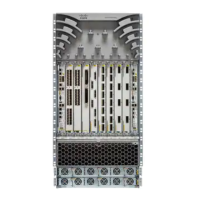DETAILED STEPS
PurposeCommand or Action
configure
Step 1
Applies and activates a rule set and enters correlation
apply rule set configuration mode.
logging correlator apply ruleset correlation-rule
Example:
RP/0/RSP0/CPU0:router(config)# logging correlator
apply ruleset ruleset2
Step 2
Do one of the following:
Step 3
•
Applies a logging correlation rule set to all nodes
on the router.
•
all-of-router
•
Applies a logging correlation rule set to a specific
node on the router.
•
location node-id
•
context name
◦
The location of the node is specified in the
format rack/slot/module .
Example:
RP/0/RSP0/CPU0:router(config-corr-ruleset)#
all-of-router
•
Applies a logging correlation rule set to a specific
context.
or
RP/0/RSP0/CPU0:router(config-corr-ruleset)# location
0/2/CPU0
or
RP/0/RSP0/CPU0:router(config-corr-ruleset)# context
commit
Step 4
(Optional) Displays the correlator rules that are
defined.
show logging correlator ruleset { all | correlation-ruleset1
... correlation-ruleset14 } [ detail | summary ]
Example:
RP/0/RSP0/CPU0:router# show logging correlator
ruleset all
Step 5
Modifying Logging Events Buffer Settings
Logging events buffer settings can be adjusted to respond to changes in user activity, network events, or
system configuration events that affect network performance, or in network monitoring requirements. The
appropriate settings depend on the configuration and requirements of the system.
This task involves the following steps:
•
Modifying logging events buffer size
Cisco ASR 9000 Series Aggregation Services Router System Monitoring Configuration Guide, Release 4.2.x
17
Implementing and Monitoring Alarms and Alarm Log Correlation
Modifying Logging Events Buffer Settings

